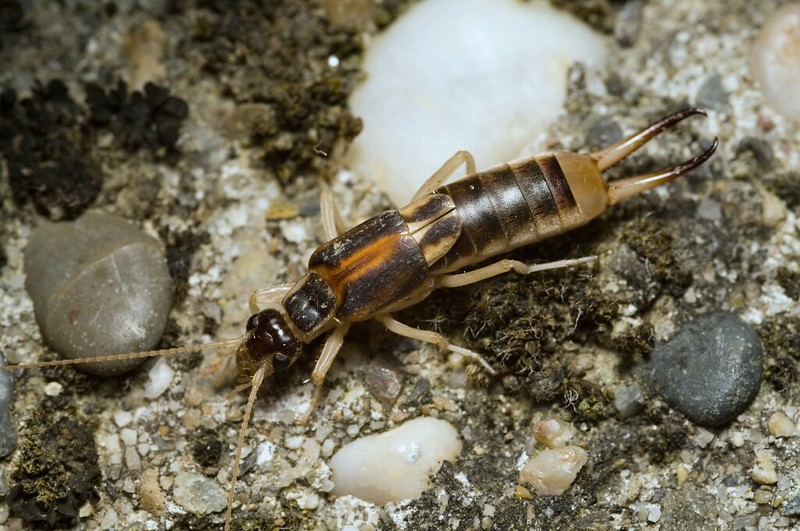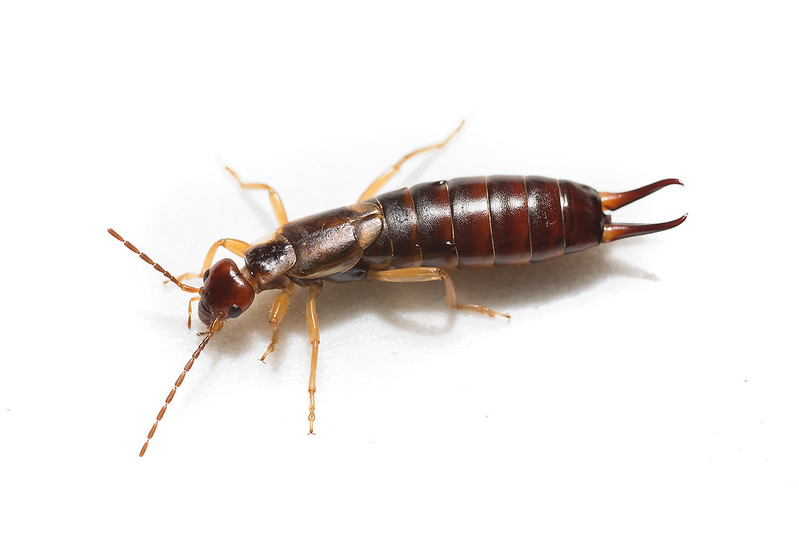Earwigs strongly prefer damp and dark environments. Most earwig species are scavengers who primarily eat decaying plant and other organic matter, but a few are predators that target other insects. Quite a few earwig species do snack on living plants, particularly the roots. Since earwigs are mostly outdoor bugs, anyone wondering how to get rid of earwigs most likely has them in the garden. Earwigs do occasionally make their way into people’s homes, however, where they are most likely to be found in and around (compost) bins and houseplants.
What can you do to get rid of earwigs, whether outdoors or inside?
How to Kill Earwigs
Because earwigs will use their pincers if they feel threatened, during which time they can also emit a foul-smelling substance, it is best to avoid handling earwigs with your hands. They’re not dangerous, per se, but they are unpleasant. If you spot a single earwig in your home, you may be able to squash it or trap it to release it outside. However, earwigs move quite quickly — and that’s why hoovering them up is quite an effective way to catch an earwig.
If you suspect that you have a larger earwig infestation in your home, it may, however, be time to call in the pest control professionals. These indoor infestations are rare, but possible in cases of crawl spaces with a lot of soil, or in homes with numerous houseplants. The best things to do would be to concentrate on ways to render the space inhospitable to earwigs, rather than to focus on killing individual earwigs. Many insecticides are, however, efficient at killing earwigs. To achieve this goal without harm to people, pets, and plants, a pest control company that focuses on integrated pest management is your best bet.
Natural Earwig Control
To prevent earwigs from entering your home, the following pesticide-free steps are very effective:
- Most earwigs primarily feed on organic matter like decaying leaves. By keeping the area immediately surrounding your foundation walls free of organic matter, including plants, you will discourage earwigs from entering your home.
- Discard organic garbage as soon as possible.
- Inspect new houseplants for earwigs, shaking them out gently before you bring them inside.
- Sealing cracks and crevices around your foundation walls will also prevent earwigs from coming inside.
- Making sure your basements and crawl spaces are not overly humid, by installing dehumidifiers if necessary, will help deter earwigs and other bugs.
- Check your gutters to ensure that water drains away from the house. Localized moisture buildup attracts earwigs as well as many other bugs.
In the garden, you can:
- Sprinkle diatomaceous earth, a very effective natural pest control method, around to kill earwigs.
- Spray a solution containing neem oil onto your vulnerable plants, as this natural insect repellent is great at repelling all sorts of pests, including earwigs.
- Set up bird feeders in your garden. Attracting birds will help control the earwig population in your garden.
- Regularly clear organic debris like fallen leaves and dead plants, which are on earwigs’ menus.
How to Make an Earwig Trap
Earwig traps can also play a role in eliminating these pests from your garden and home alike. You have several options, which rely on the same principle of attracting earwigs, causing them to fall in to the trap, and preventing them from coming back out:
- Fill small container with water and dish soap.
- Fill a small container with water and vegetable oil.
- Buy a can of sardines in olive oil. Enjoy the sardines. Leave the oil in the can, and set it up for earwigs.
The surface tension created by the soap or oil will prevent earwigs from exiting the trap once they have made it inside. Oily traps will naturally attract earwigs, but soapy ones will not necessary do so, so you will want to cover these with a light coating of old leaves or compost. Like other nocturnal bugs, earwigs seek out light sources — so setting up a small light that shines directly at the trap will make the trap more effective. Once earwigs have fallen in, you can discard the trap and set up a new one.
Citations and Credits

